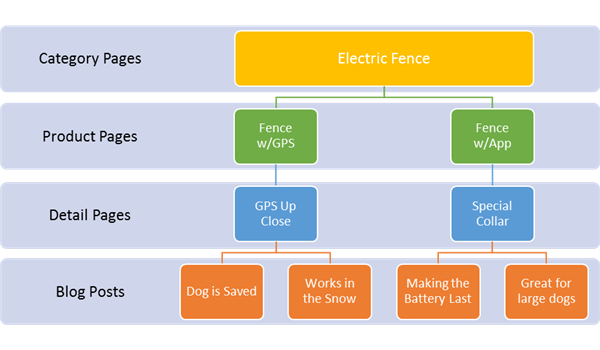Writing a Blog to Grow Your Business

“What do I write about?”
It’s inevitably the first question any business starting up a company blog will ask. And it’s inevitably the question that will continue to be asked as long as the company blog exists.
If you’ve done any research into business blogging, you have probably encountered endless articles about why you should have a business blog. These articles are often supported by survey results and data analysis. They typically explain that it can be a successful, cost-effective way to bring traffic to your website. An active blog means the search engines see your fresh content, which, if set up properly, can help improve your SEO performance. An active blog means you have plenty of fodder for sharing on your social media networks. You can also email articles to prospects and clients, and encourage people to contact you in the post itself (calls to action). All this, in turn, can grow your leads, increase sales, build your authority, and expand your market reach.
Write to Delight
Dive in a little deeper, and you are guaranteed to find even more articles about how to put together a blogging program. And they all make it sound so quick and easy.
Chances are you’ve come across some version of this advice: “To bring readers to your blog, all you have to do is write to delight and inform.” This is usually accompanied with plenty of tactical (?) advice:
- Plan your content in advance
- Use an editorial calendar
- Headlines/images/bullet points sell
- Understand your personas
- Blog daily/weekly/monthly/regularly
- Write to delight (there it is again!)
Sounds nice at a first read, but if you stop to think about it, what does it really mean? Can a business owner really turn this advice into an effective company blog? We don’t think so. At least not without investing way more time into understanding what it all means than anyone actually has. Because first and foremost, you still need to answer the question, “what do I write about?”
A Thoughtful Way to Structure Your Blog Content
There’s some old-school advice about writing that can be more constructive: “Write what you know.” You know your business. You know your customers. So in theory, you know what your customers need to know about your business.
We’re getting closer, but we need to take it to the next level by adding some manageable way to plan your content that takes into account all the benefits we discussed above: SEO, social media sharing, individual distribution.
So let’s start with what you know: your products and services. Ideally, your website is structured so each category of products or services has a dedicated page (on the SEO side, think broad key concept, or a category of keywords). These Category Pages link to individual Product or Service Pages (for SEO, this equates to “longer-tail keywords”). There may be one or two additional, highly-targeted pages for each of those services, focusing more in-depth on various aspects of that service or product.
Enter your blog. Each of your product or service pages offers near endless fodder for blog posts. Product updates, news, customer reviews, customer examples, how-to articles, all make good blog content.
Put the pages and blog posts together, and you have a content hierarchy that can be used to strategically answer the question, “what do I write about?” Not only will you have something to write about, but you will have content that will help your SEO efforts, move your prospects along the sales funnel, and allow you to reach out via social media networks.
An Example: Sit, Stay, Home – an Electric Fence Company
Let’s use Sales Renewal’s fictitious company, Sit, Stay, Home, to demonstrate the power of this model.
- Our top-level Category Page “Electric Fence Models” gives a summary of all our electric fence products.
- Each summary is linked to a Product Page, for example, “Model 1 – Electric Fence with GPS Collar”.
- This, in turn, links to a Special Features page, explaining “How the GPS Collar Works.”
- We can then generate Blog Post content for these Product or Special Feature Pages to enhance the reader’s understanding of your product: how the idea was developed (company insights); true-life example of how a dog was saved by wearing the collar (testimonial); why it works even in snow (geographic reference); what types of dogs it is best for (customer example); how to prolong the battery life (tips).
You’ll want to go through this process for each category of product or service you offer. At the end, you will find you have plenty to write about. And you will be able to systematically plan and schedule your content so you develop a well-rounded website, with pages and posts that support and explain your business.
With this birds-eye view of your content, you can balance they types of posts you write, as well. For example, one week you might write about why the GPS model works in the snow, the next week a customer testimonial about how Model 2 worked better than anything she had tried. Week 3 announces a software update for Model 4, and week 4’s post offers tips and tricks for better training.
Of course, once you know what to write about, you can rely on readily available advice for how to write it, being sure to take into account readability, WIFM (what’s in it for the customer), delight (!), SEO, and social sharability.
Sales Renewal’s insight:
“What do I write about?”
It’s inevitably the first question any business starting up a company blog will ask. And it’s inevitably the question that will continue to be asked as long as the company blog exists. By looking at the content of your web pages and blog posts together, you have a content hierarchy that can be used to strategically answer that question.






